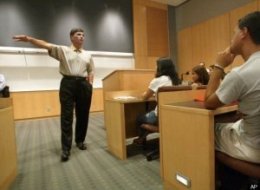This overview of organizing was prepared by Casey Hebert while an Accounting major in the College of Business at Southeastern Louisiana University.
Introduction
One key point in a manager’s position is to have the ability to organize. Organization is being able to determine how, why, and who should do a task. It also refers to keeping documents and statements for the business readily available and easy to read.
The Idea in a Nutshell
Organizing is the ability to have logic behind why and how a task is performed. Organization began with the start of written communication. As humans, we are always trying to organize our lives. Organization is a simple task to perform in order to figure out and complete a much more complex problem.
The Top Ten Things You Need to Know About Organizing
1. The first thing a business should do in organizing itself is to write out a mission statement, the concept of the business, and what the vision is for the future. By doing this, all decisions can be based on these already set goals.
2. Any form of organization is to lead to a specific goal or endpoint. Once the endpoint is decided, it takes organization to figure out the best way to reach that goal.
3. The term organization, to mean the actual business, comes from the fact of having individuals working together with their own duties in order to achieve a working goal.
4. When organizing people to perform a task, a manager should first figure out the employees’ specializations. This way, when delegating certain jobs, people can work on what they do best, in turn getting the job done faster and more precise.
5. Organizing a task can cut down losses for a business. If a job is done twice or not completed correctly due to confusion, this can cost the business money. By organizing, there should be no confusion.
6. Organizing is a way to make sure no one person has too much to do. When a task is organized, it is easier to see who should be doing what. If more workload is on a single person than necessary, then it is easier to notice and reassign jobs.
7. When working in a cluttered space, workers feel more stress and more useless. When a space is organized and free of distractions, more efficient work can be done. This also can lead to more pleasant coworkers around the office.
8. Properly organizing task should cut down on overtime hours or take-home work. If task are properly delegated, then enough time should be given to each worker to complete the task. If too much overtime hours are being used, the work may not properly be organized.
9. When organizing is done correctly, accountability becomes easier to manage. If a job is not done correctly, knowing specifically who to talk to about the problem saves time and stress rather than having to question people or investigate who did wrong.
10. A way of organizing a business is by departmentalizing. This is putting workers in actual departments and that department working on a specific job. Part of delegating would be putting someone in charge of each department and that person would then in change give each person in the department an even more specific job.
My Take
Organizing is definitely still an important part of Management. Without some sort of organization, no task would ever get completed. I was an assistant manager of a retail store for three years, and I remember everyday going into work and seeing what workers I had coming in so I could figure out who would do what when they got to work. It stops a lot of confusion and also cuts out a lot of hanging out time that could be used to work and achieve the goal of the business.
At my job I have currently, I work at a desk and have a basket which other employees drop lots of papers into while I am not there. When I come into work I could either start working from the top of the basket, or take time to organize what is actually in the basket and see what needs to be done first. I have definitely learned from experience that organizing is crucial in getting work done.
References
Kurtus, Ron. (2000, February 14). Organizing your business. Retrieved from http://www.school-for-champions.com/business/organize.htm.
Organizing. (2010). Wikipedia. Retrieved (2010, June 14) from http://en.wikipedia.org/wiki/Organizing.
+++++++++++++++++++++++++++++++++++++++++++++++++++++++++++++++
Contact Info: To contact the author of “Top Ten Management on Organizing,” please email casey.hebert@selu.edu.
BIOGRAPHY
David C. Wyld (dwyld.kwu@gmail.com) is the Robert Maurin Professor of Management at Southeastern Louisiana University in Hammond, Louisiana. He is a management consultant, researcher/writer, and executive educator. His blog, Wyld About Business, can be viewed at
http://wyld-business.blogspot.com/. He also maintains compilations of his student’s publications regarding book reviews (
http://wyld-about-books.blogspot.com/) and international foods (
http://wyld-about-food.blogspot.com/).
AN INVITATION TO WORK WITH US, TODAY!
If you enjoyed this publication, why not make one of your own with us! Are you a college or university student from anywhere in the world who would be interested in publishing your work in an edited online journal appropriate to your topic? Such a move can help put muscle into your resume and make a great impression on potential employers and graduate schools (and needless to say – and perhaps most importantly in the age in which we live – likely be the first thing that companies/universities view about you when “Googling” you)! If so, we can help you get that first publication for free (and more if you desire)! Visit Wyld Publishing Services (
http://wyldpublishingservice.yolasite.com/) for details. We can work with you to publish your quality essays, research articles/papers, reviews, etc. – and even audio and visual media and PowerPoint presentations – given our network of edited publications and relationship with publishers around the world who want to work with you and your work. Contact us today at
dwyld.kwu@gmail.com.
Read more:
Top Ten Management on Organizing: An Overview of The Importance of Organizational Tactics
++++++++++++++++++++++
 Image via Wikipedia
Image via Wikipedia





